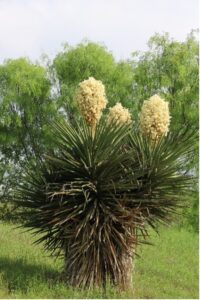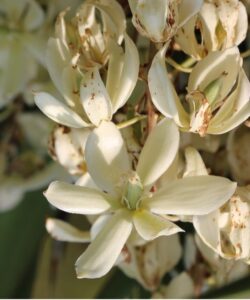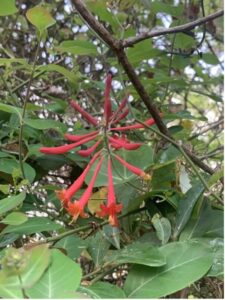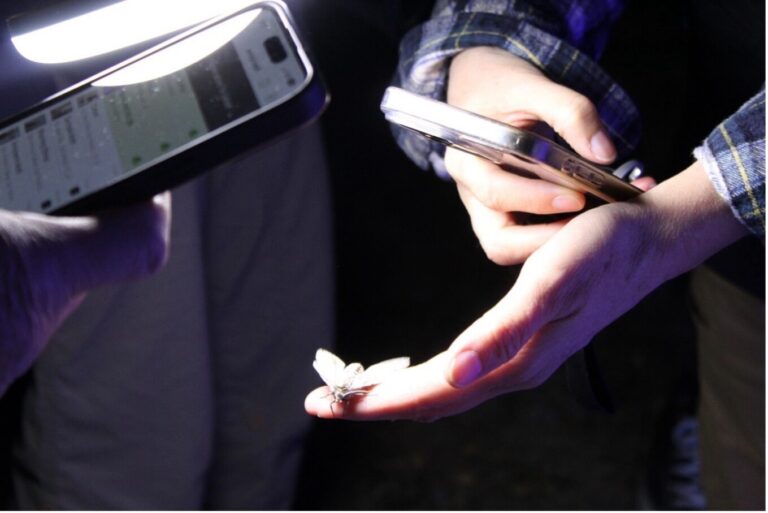Did you know that April is designated as National Native Plant Month? Texas has over 5,000 native plant species, which can be found in incredibly diverse habitats throughout the state. The San Antonio River Basin comprises many ecosystems where these diverse plant communities thrive and contribute to clean, safe, and enjoyable creeks and rivers. Join the River Authority’s Sustainable Landscape Ecologist Lee Marlowe as we take a closer look at six native plants with incredible spring blooms!
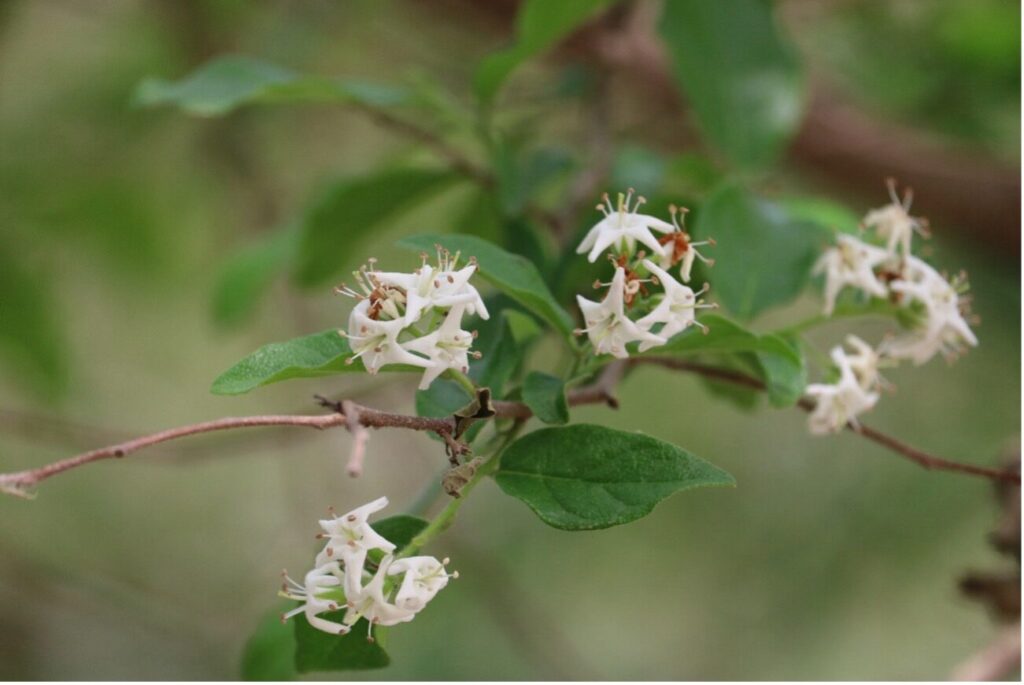
Tree-mendous Texture and Sweet Scents: Anacua, Ehretia anacua
Clusters of white blooms cover the Anacua tree in spring, filling the air with a sweet smell. This large tree can grow up to 50 feet tall with flowers occurring during spring through summer. Also called Sandpaper Tree, the leaves feel like rough sandpaper— making it easy to identify by touch. Although deciduous, the leaves often remain on the tree through winter providing evergreen color in the landscape. The flowers and bright orange fruits of Anacua provide food for pollinators, birds, and other wildlife. Because this tree provides an abundance of fruit, it is best planted in spaces where the fruit can freely fall.
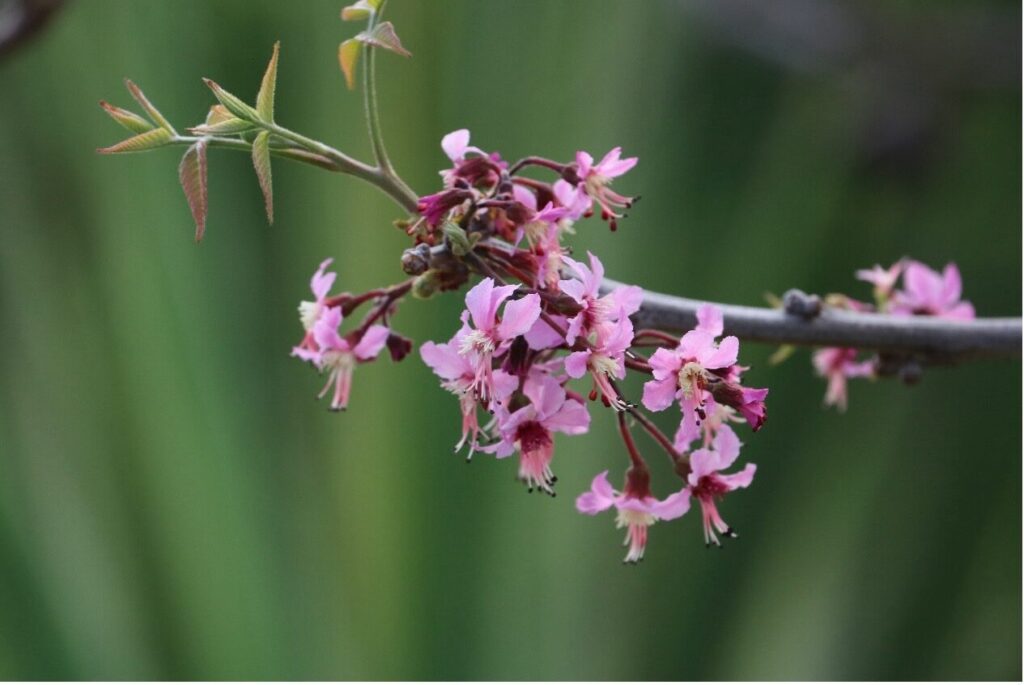
Blossoms and Baubles: Mexican Buckeye, Ungnadia speciosa
Attractive pink blooms cover the branches of Mexican Buckeye before or while the leaves emerge each spring. In addition to ornamental flower clusters, this native tree has interesting seed pods that look like ornaments hanging from its branches. Growing up to 30 feet tall, this understory tree is often used as a specimen plant or focal point in landscapes. Pollinators are attracted to its flowers and the seeds are eaten by birds and other wildlife.
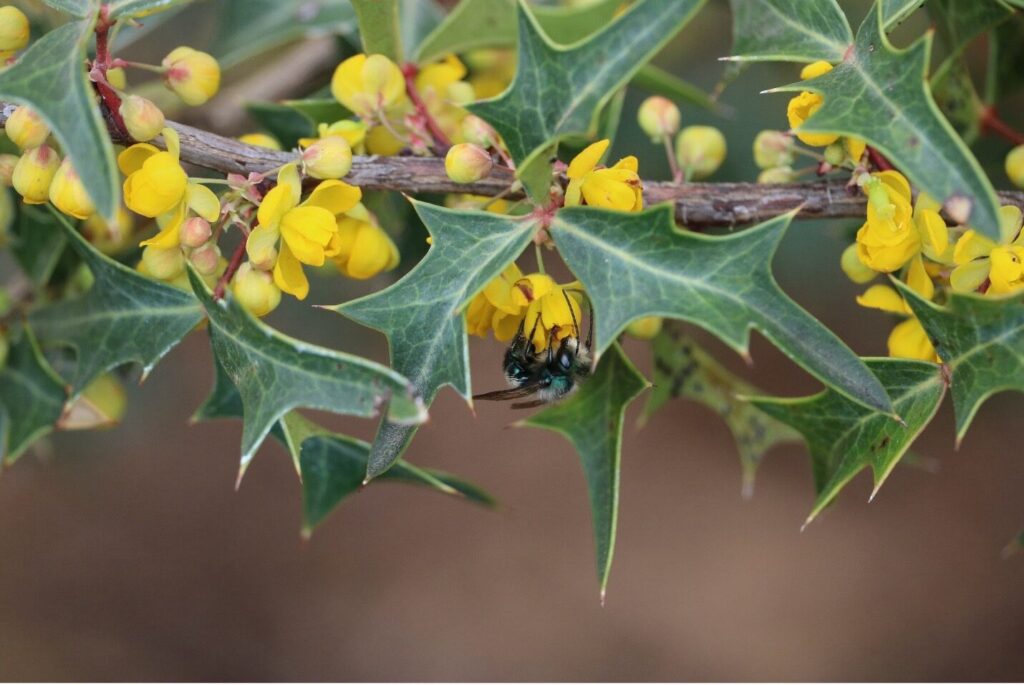
Barbed Berry-ful Beauty: Agarita, Mahonia trifoliolata
Often one of the first plants to bloom in spring, Agarita is an attractive evergreen shrub growing up to 10 feet tall but usually reaching between 3 and 6 feet in height. Fragrant, bright yellow flower clusters cover the branches. The leaves are spiny, making this native plant a good choice for landscapes with deer pressure, and it can be used as a barrier planted around other ornamental plants that would normally be browsed by deer. The bright red fruits are ornamental and a favorite food of birds and other wildlife.
Blades, Blooms, and Butterflies: Spanish Dagger, Yucca treculeana
A striking large native yucca, the Spanish Dagger provides interest and beauty to any landscape. A large spike of creamy white flowers emerges in spring from an evergreen cluster of sharply pointed green leaves. The blooms are visited by butterflies and moths, and it is a larval host for multiple species of Giant Skipper. Interestingly, the first iNaturalist observations in Bexar County of the Yucca Giant Skipper were made at the River Authority’s Trueheart Ranch Nature Park in December 2024 through March 2025 along the Yucca Trail which includes this and other species of native yucca.
Hummingbird Magnet: Coral Honeysuckle, Lonicera sempervirens
Vibrant red flower clusters appear on this native twining vine from spring through summer attracting hummingbirds like a magnet. The attractive flowers are followed by ornamental shiny red fruits that are loved by birds. This native vine can grow up to 20 feet long and does well on arbors, trellises, or other support structures. It is not as aggressive as other vines and can also serve as a ground cover. In addition to hummingbirds, it attracts butterflies and bumble bees. It is a larval host for the Snowberry Clearwing Moth.
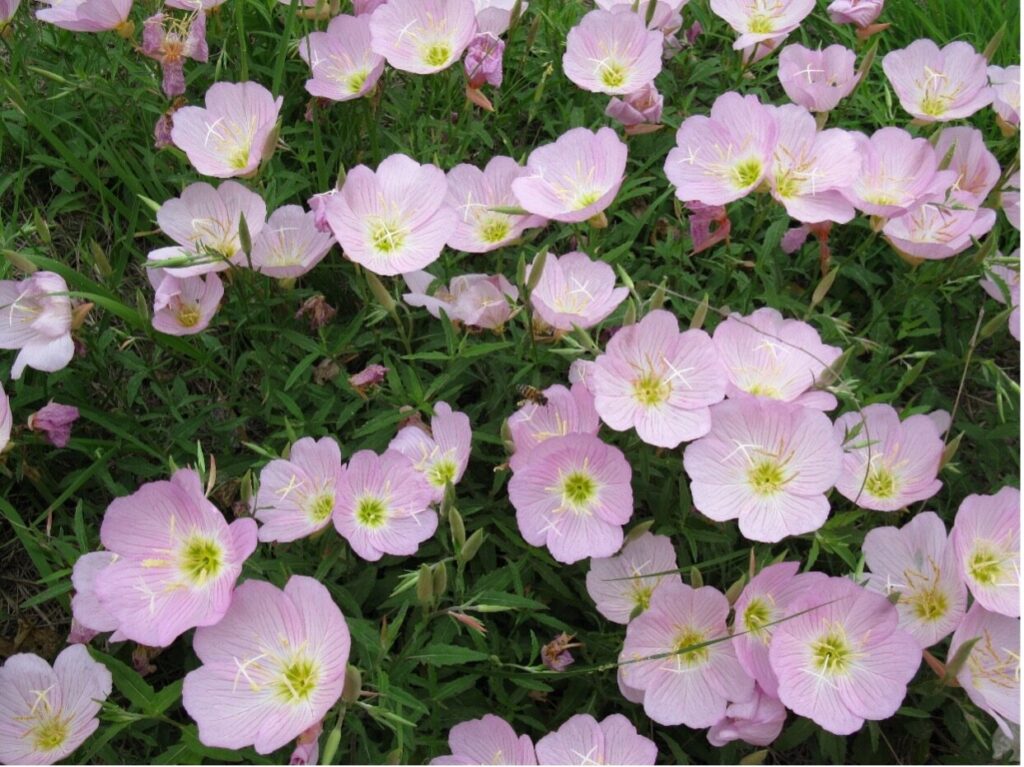
Pink Petal Club: Pink Evening Primrose, Oenothera speciosa
This eye-catching native wildflower covers the earth with a beautiful pink blanket in spring. Reaching up to 2 feet in height, this perennial plant forms large patches making it a good choice for natural landscapes and wildflower gardens. It flowers from February through July and attracts bees and other pollinators. Finches and other birds feed on the seed capsules.
From the sweet scent of the Anacua to the vibrant blooms of Coral Honeysuckle, these native plants not only brighten our gardens but also support local pollinators, birds, and wildlife. Whether you’re creating your own wildflower patch or enhancing your yard with native trees and shrubs, incorporating these stunning plants is a great way to make your space more sustainable, colorful, and pollinator-friendly. So, get out there, roll up your sleeves, and let South Texas’s spring show inspire your own backyard oasis!
Native Plant Nurseries and Resource List

